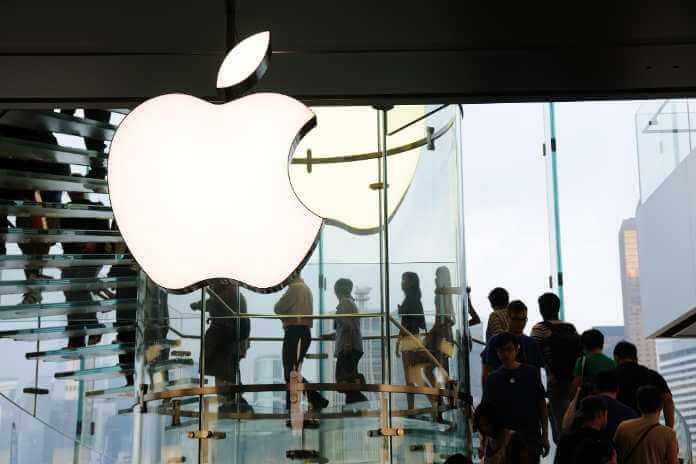Apple (NASDAQ:AAPL) stock has been under pressure since the end of July 2022, when research firms began announcing poor Q2 smartphone shipments and Micron (MU) provided a gloomy outlook on memory sales due to a slowdown in consumer electronics goods such as smartphones and PCs.
In this essay, I offer my thesis, which contends that Apple’s flagship smartphone sales and other products will outperform expectations based on a thorough dive into 1H2022 statistics, given Apple’s lack of empirical advice for F4Q.
Smartphone shipments may be down, but Apple is on the rise – a positive sign.
Much of the negative news surrounding the consumer electronics business is a poorly thought-out headline. For example, smartphone shipments fell yearly, but Apple shipments soared.
According to Counterpoint Research, Apple had a 147% year-over-year increase in the $1,000 and above segment of the smartphone market, accounting for 46% of the entire market.
Global smartphone shipments declined -7% year on year to 291 million devices in Q2 2022. However, as seen in Chart 1, Apple delivered 48 million iPhones globally, up +3% yearly, for a 16% global market share in Q2 2022. This is Apple’s greatest second-quarter market share in the last ten years, at the cost of top Chinese brands, which were plagued by poor performance in domestic and international markets. Nevertheless, apple had a successful quarter, led by iPhone 13 series, which continues to ramp up shipments in the US, China, and other major regions, according to the firm.
Will Dour Economy Influence iPhone 14 Sales?
Macroeconomic headwinds, notable inflation, have hampered investors. However, these headwinds have subsided significantly in the month following Apple’s F3Q results call.
However, moving the Apple event to September 7 has sparked speculation that it was done in light of the economic malaise affecting consumers before further bad news. I see the move as a chance for Apple to cheaply jump-start its supply chain, given that its delivery timetable looks reliable with no issues.
This method will financially assist component suppliers since layoffs and redundancies are on the horizon. It is also intended for app developers, many of whom own small businesses. Positive economic news in the last two weeks:
- Consumer confidence reached 103.2 in August, up 7.9 points from the previous month’s final level of 95.3.
- Producer prices fell 0.5% in July compared to the previous month.
- In the second quarter, home prices reached an all-time high.
- Consumer confidence in the United States climbed to 55.1 in early August, extending its rise from a record low earlier this year as inflation forecasts improved.
- Retail expenditure in the United States remained stable in July, while spending excluding automobiles and fuel increased by 0.7%.
- Initial jobless claims fell to an annually adjusted 250,000 last week, indicating that the labor market is steady.
- Employers in the United States added about 462,000 more jobs in the year through March than the Labor Department had predicted.
- GDP in the United States decreased less than originally estimated in the second quarter, shrinking at a 0.6% annual pace from April to June, down from an initial 0.9% rate.
- On the negative side of things:
- Durable-goods orders remained unchanged in July as businesses reduced orders for long-lasting goods, reflecting a cooling in demand amid other signs of a slowly moving U.S. economy. • Consumer spending increased 0.1% in July, as inflation remained near a four-decade high. • New applications for unemployment benefits increased to 262,000 last week, following a 50-year low in March.
• Housing starts in the United States slumped 9.6% in July compared to the previous month. Rising inflation and increased mortgage rates make developing and buying property more costly.
• Existing home sales in the United States also fell for the sixth consecutive month in July, the longest streak of declines in more than eight years, as higher mortgage rates and a lack of available homes cool the market. • Businesses cut back on orders for long-lasting goods, reflecting a cooling demand amid other signs of a slowing U.S. economy.
Investor Takeaway
Apple’s service revenue will reach $112 billion in the fiscal year 2024. Services will account for 25.6% of total sales in FY2024, up from 18.7% in FY2021. As a result, the gross margin was anticipated to be lower sequentially (41.5-42.5% against 43.3% in F3Q).
My biggest issue is that despite the optimistic scenario I provided in this essay, the performance of technology stocks remains significantly associated with the 10-year Treasury rate. This was covered in depth in my Seeking Alpha post titled “Why Are Tech Stocks Selling Off And What Is The Outlook?” on July 1, 2022. Since 1976, there have been six significant US recessions, each defined by at least two consecutive quarters of negative GDP growth. All six recessions, shown by gray panels in the figure below, were preceded by the 10-2 spread becoming negative. Each recession happened less than two years after the 10-2 spread was first inverted.
Apple’s iPhone 14 presentation on September 7 will give reporters details on incremental performance increases beyond the iPhone 13. That appears to be Apple’s regular operating method with each iPhone model launched. However, the context of this incident reveals information about the company’s health despite macroeconomic difficulties.
My efforts to “think outside the box” suggest to readers that the “bright spots” in Apple’s event scheduling (a positive) and ancillary success in iPhone shipments and market share (a positive) provide a buying opportunity for investors.
Featured Image – Megapixl © Bedo

















